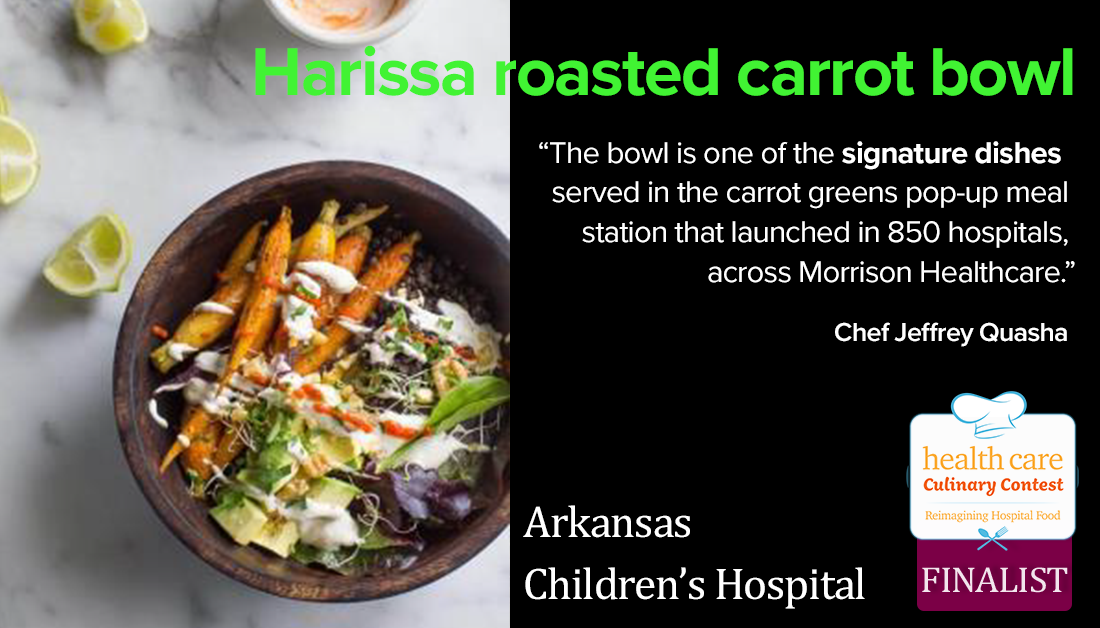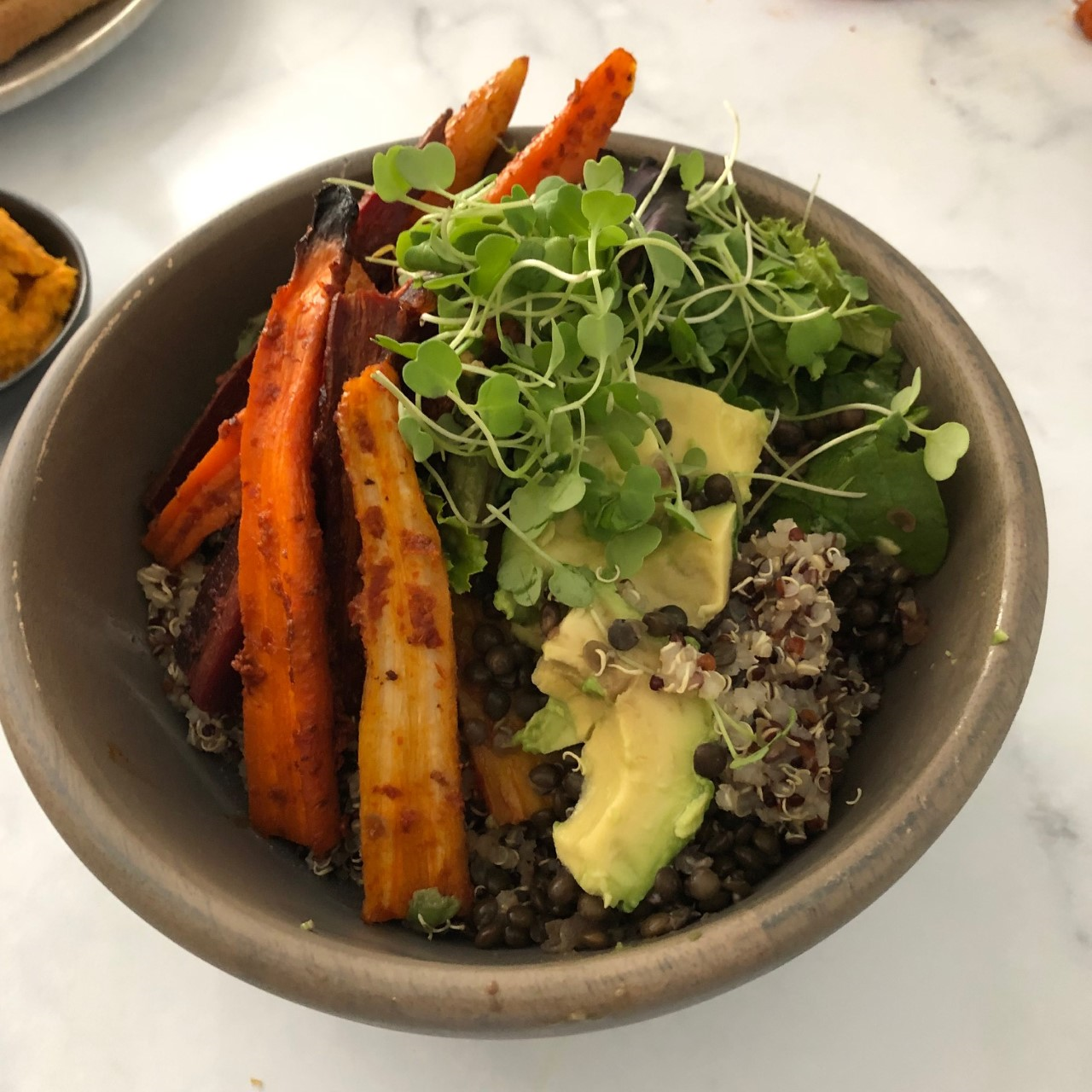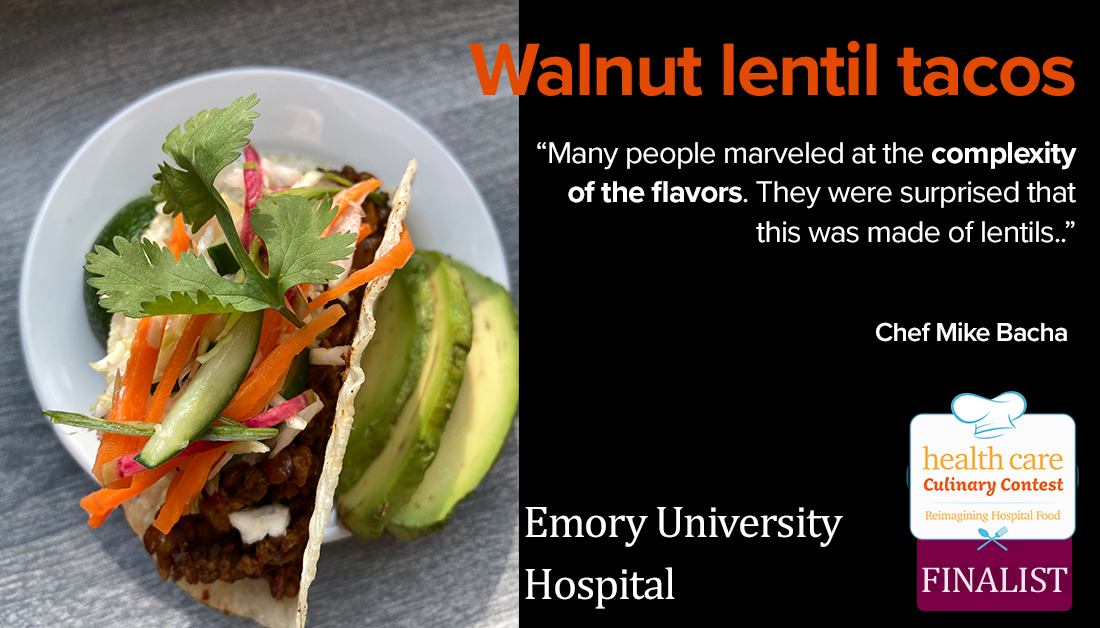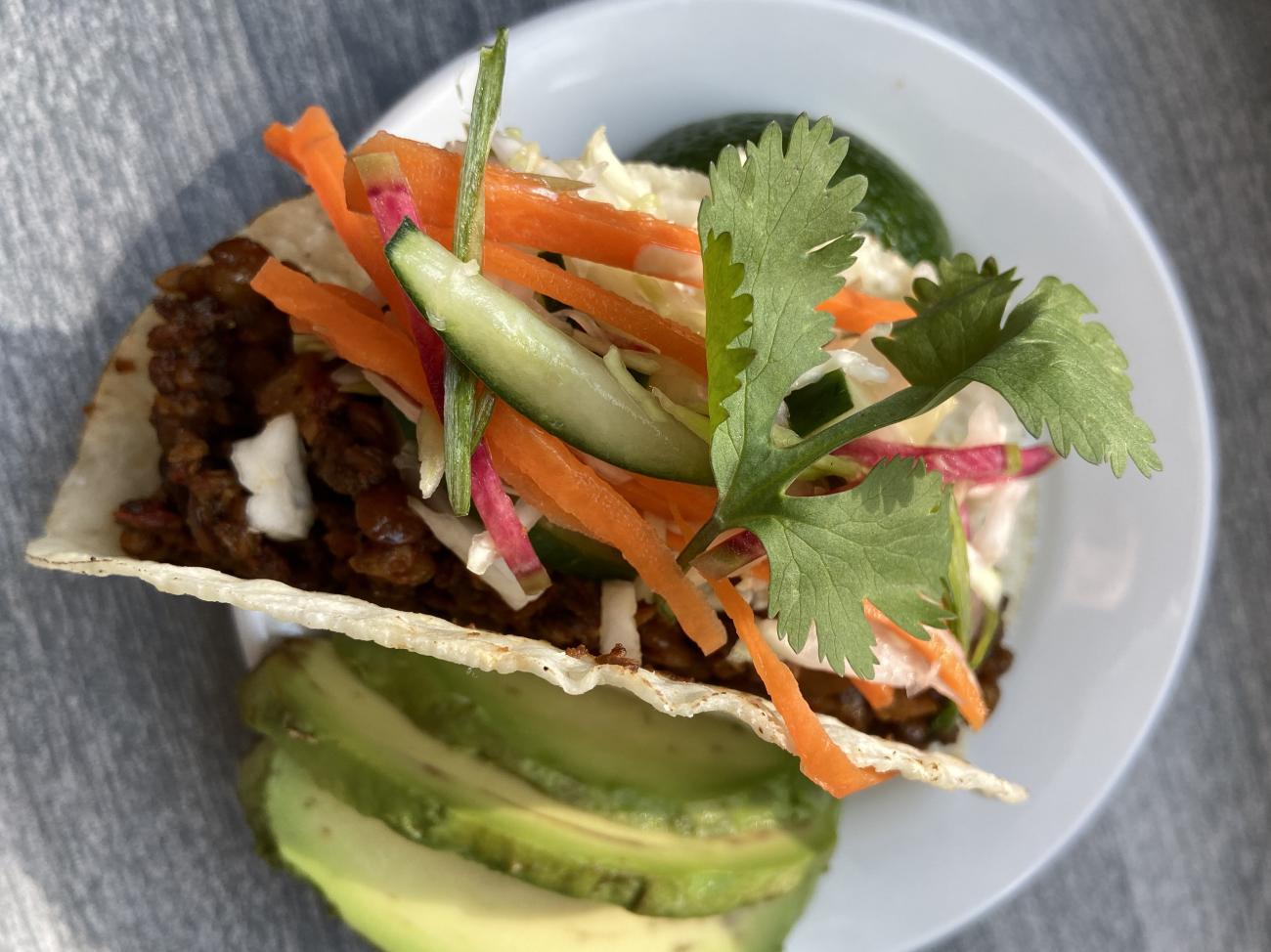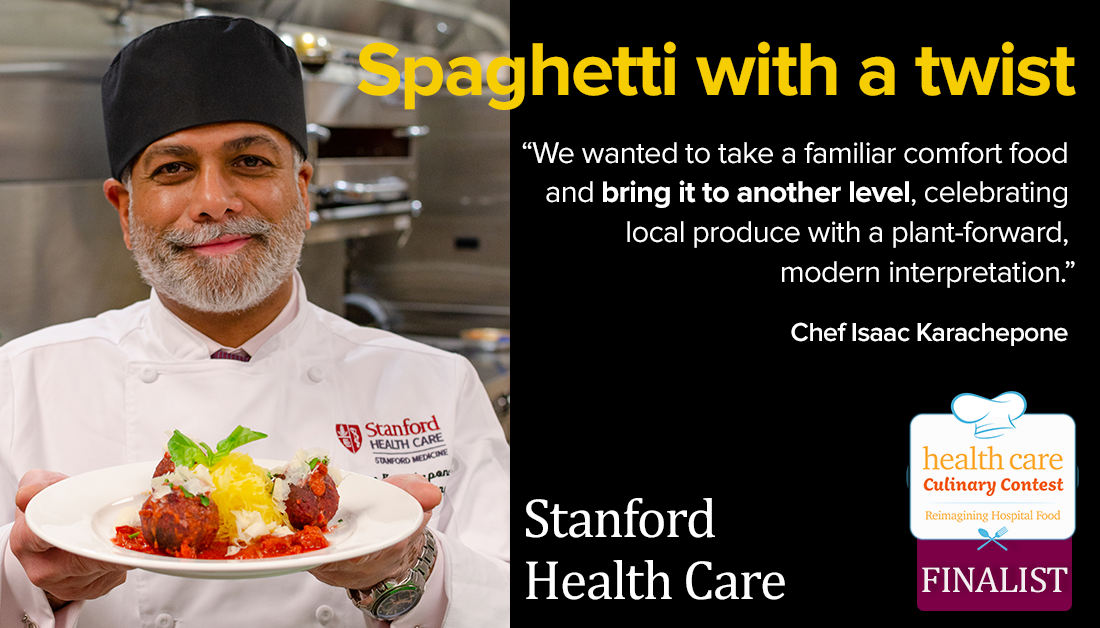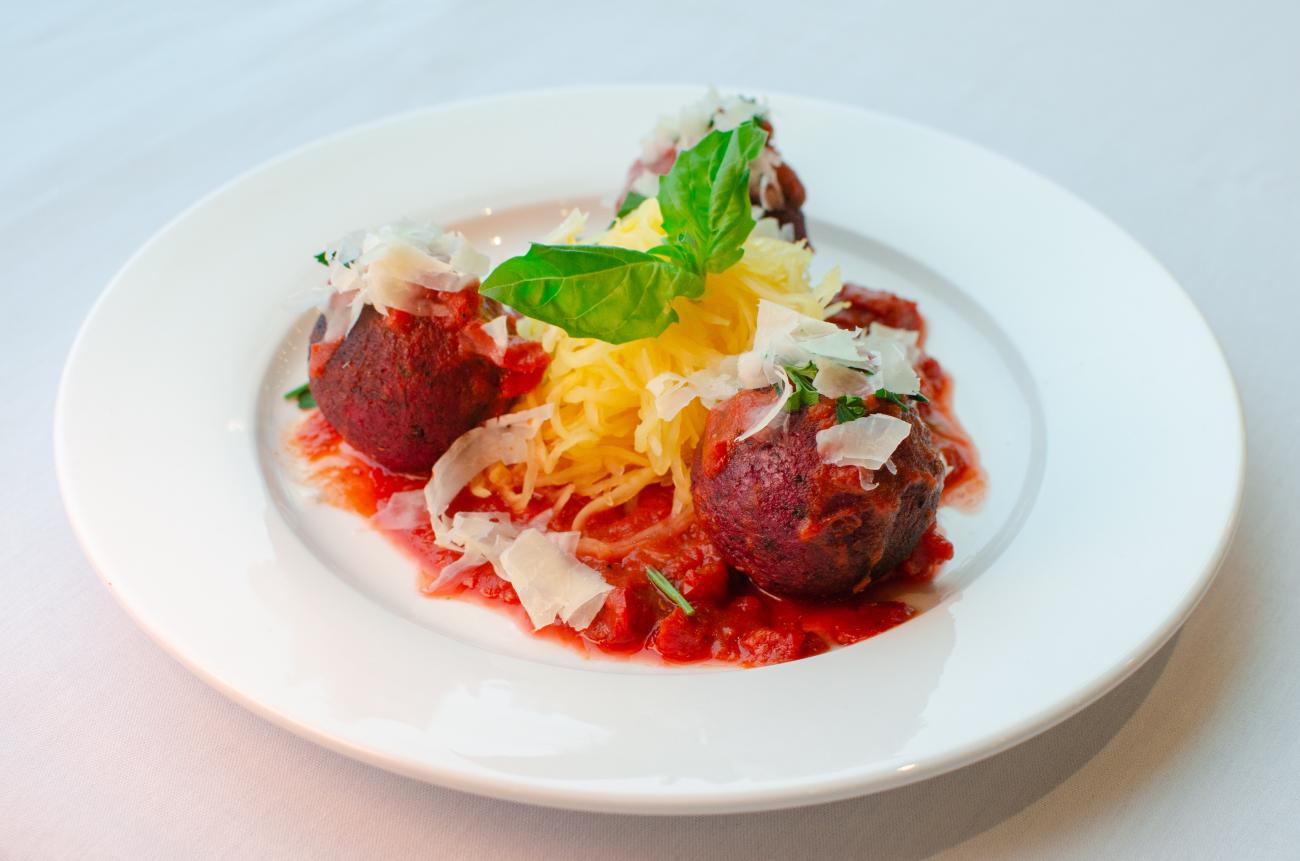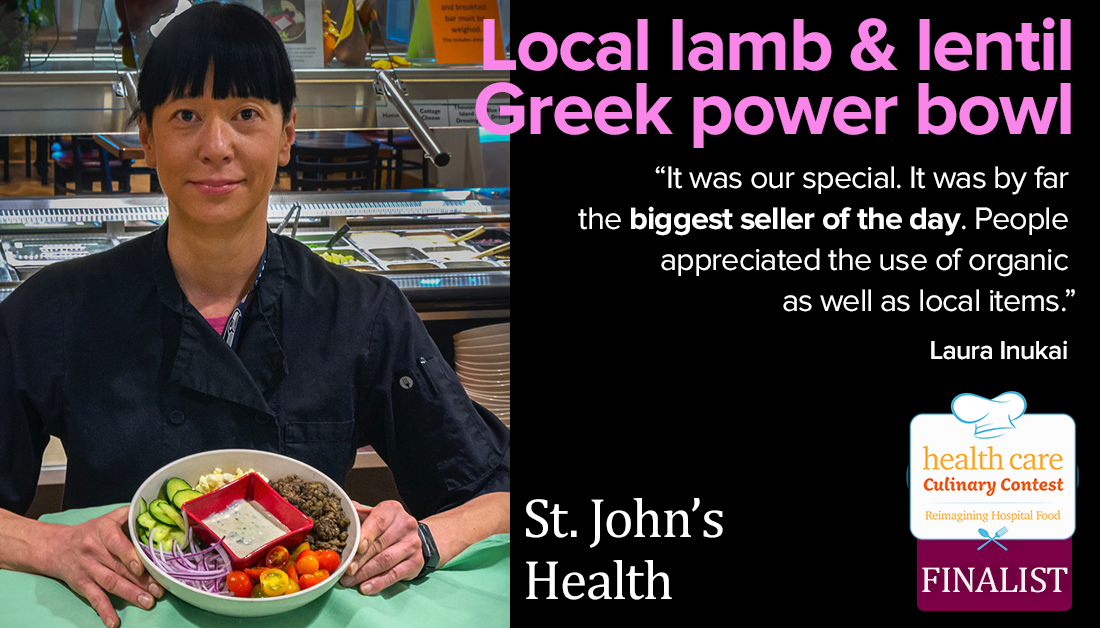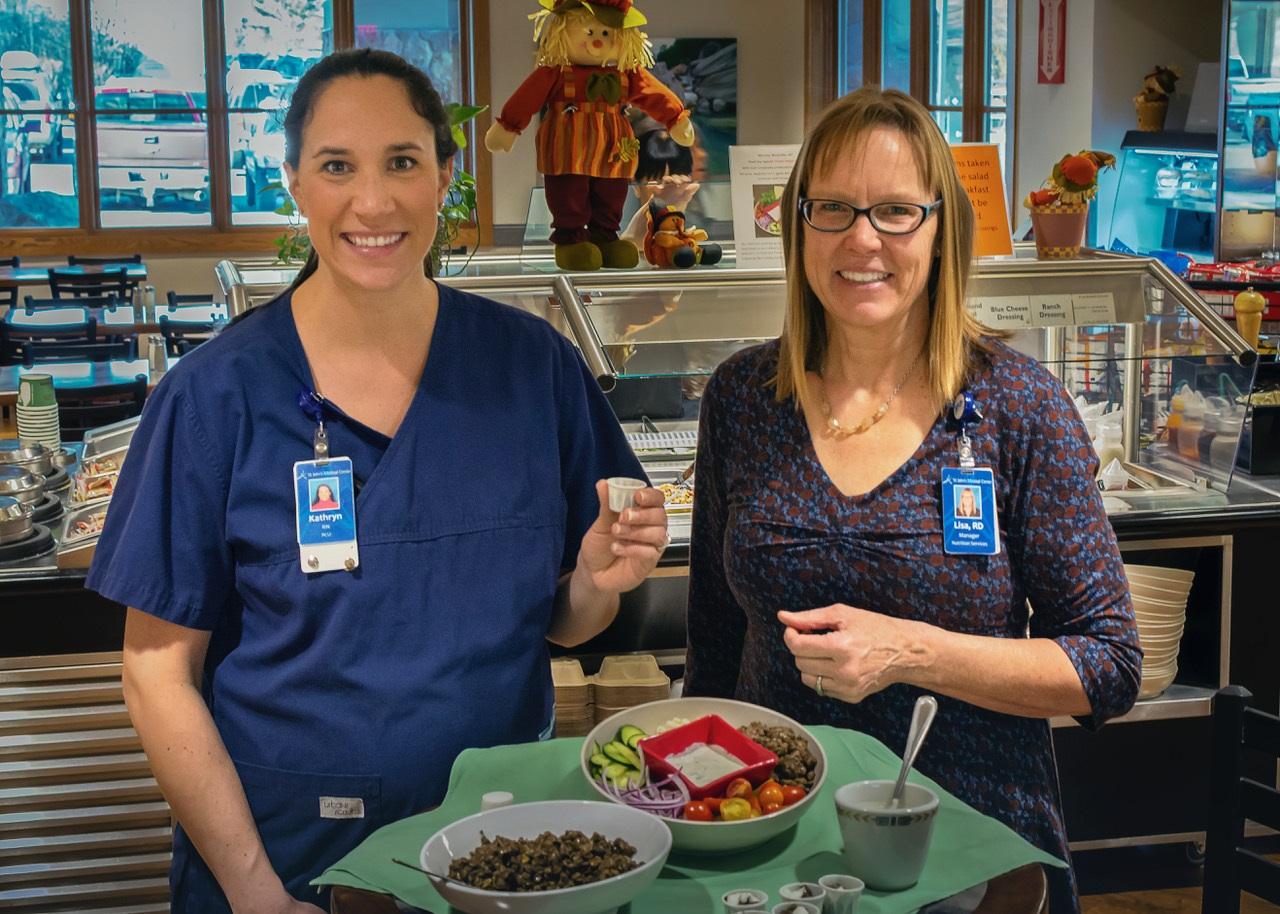Download, create, and enjoy recipes from past winners and finalists in the Health Care Culinary Contest.
Meet the 2019 Health Care Culinary Contest finalists
- Arkansas Children’s harissa roasted carrot bowl
- Emory University Hospital’s walnut lentil tacos
- Stanford Healthcare’s spaghetti with a twist
- St. John’s local lamb and lentil Greek power bowl
The winner of the 2019 Health Care Culinary Contest was Adventist Health’s Vitaliz haystack by Chef Nina Curtis. Read more about the winning chef, the story behind her recipe, and how all of the recipes were judged.
Recipe
Harissa roasted carrot bowl with quinoa, lentils, spring greens, topped with tzatziki, avocado slices, and cilantro
Hospital
Arkansas Children’s Hospital, Little Rock, Ark.
Chef
Jeffrey Quasha
Meet the chef
For the past 25 years, Jeffrey Quasha has surrounded himself with the passion, intensity, and finesse of the culinary industry. He has won multiple awards for his work in the restaurant and hotel sectors and led the culinary team at the London Olympics. In 2013, Quasha decided to shift his career to the healthcare food service industry after the tragic loss of several family members to cancer. In his role as Morrison Healthcare corporate executive research and development chef, Quasha is responsible for identifying food and beverage trends emerging in the industry and developing products and programs for Morrison. He and his team have earned top honors as Food Management magazine’s “Best Concepts of 2017” and “Most Innovative Hospital of 2018.” In addition to his work advocating for the fight against cancer and culinary education standards, he has been featured on several Food Network programs, PBS, and Travel Channel cooking shows. Quasha has made it his life's work to develop retail and hospital-based food service programs to help prevent and heal cancer patients and survivors.
Why did you choose this recipe?
Back in November 2016, I was diagnosed with multiple myeloma cancer. I learned quickly after my first few chemo and radiation treatments that I would have to align my diet and lifestyle with a “menus of change” ideology and eat cleaner, healthier, and more sustainable meals. In my career at Morrison, I have used that knowledge to develop concepts like grain bowls, broth and bowl, bonafide, egg roll and bowl, and now the carrot greens that all focus more on fresh vegetables, ancient or whole grains – and proteins have become the garnish.
How did you feature the recipe?
We passed out samples of the dish to hospital employees and staff including doctors, nurses, and administrators during lunch. We were there to answer questions about the dish and the new concept that was coming called “carrot greens” that the carrot bowl was part of. We hoped the samples would entice guests to either try something new or buy the dish for lunch or even take it home for dinner. The dish was well-received at Arkansas Children’s Hospital. We sold 45 orders for lunch at $9, which is amazing. Sales were up when we ran the bowl versus the previous Wednesday. Customers appreciated the cleaner choices and protein as a garnish; they are tired of the old-school “meat and three.”
How is your recipe good for people and the planet?
The rainbow carrots are organic and from a local farm and several other ingredients, including the spring greens, cilantro, and arugula, are sourced locally.
Closing thoughts?
I saw an article about the previous winner Chef Norbert Bomm and was inspired to enter based on his story. I also felt that my story of change could possibly inspire others to eat healthier and promote change.
Recipe
Walnut, lentil, and mushroom tacos served with honey-lime cabbage, carrot, cucumber, and slaw
Hospital
Emory University Hospital, Atlanta, Ga.
Chef
Mike Bacha
Meet the chef
Mike Bacha has been Emory University Hospital executive chef for nearly nine years. Prior to Emory, Bacha was the opening chef de cuisine of Repast restaurant in Midtown Atlanta. The restaurant was named “best new restaurant in America” by Esquire magazine, “top five best new restaurants in Atlanta” by Jezebel, and “best wine-driven menu” by Wine Enthusiast. Other notable positions include saucier at The Ritz Carlton Buckhead and chef de cuisine at Chateau Elan Winery. Bacha has spent the past nine years reforming an institutional kitchen into a kitchen that prides itself on producing in-house food from scratch, sourcing local sustainable ingredients, and providing healthier options for patients, guests, and staff. His mission is to continue to develop Emory's menus to focus even more on the sustainability of food and educate staff, visitors, and patients about the importance of food sourcing and good cooking techniques.
Why did you choose this recipe?
We have been making great strides toward including more plant-based recipes on our menus. In support of this effort, we host a monthly cooking demonstration. While we were brainstorming what to demonstrate for upcoming sessions, we came up with the idea of highlighting ingredients that are often ignored, maligned, or misunderstood. Lentils were the first one we thought of. Lentils are sometimes associated with healthy food and not so much with great cuisine. We wanted to do a session where we could showcase the versatility of lentils. That is when we came up with the idea to include a taco. We also do a consistent taco business in one of our cafes, so we knew it had potential to be featured at that station.
How did you feature the recipe?
We featured this recipe at one of our monthly cooking demonstrations. The feedback was overwhelmingly positive. Many people marveled at the complexity of the flavors and also that they were surprised that this was made of lentils. We worked on developing this recipe for our cooking demo where it was very popular and then added it to our taco offerings, and it has been selling quite well.
How is your recipe good for people and the planet?
Many of our ingredients were sourced locally from farms in Georgia and South Carolina, including the cabbage, cilantro, and cucumber (also organic).
Closing thoughts?
We have been on a journey for the past few years to raise awareness and excitement around plant-based foods and have been promoting them more in our cafes, so it seemed like a natural fit for us.
Recipe
Spaghetti squash with a sun-dried tomato sauce and super grain and lentil “meat” ball bites
Hospital
Stanford Health Care, Stanford, Calif.
Chef
Isaac Karachepone
Meet the chef
Isaac Karachepone has more than 25 years experience in the hospitality industry, leading teams in both back-of-house and front-of-house operations. His experiences range from fine dining to high-volume operations in India, Singapore, along with cities across the United States, including New York, Boston, Las Vegas, and Washington, D.C. Issac earned his degree in hotel management from The Institute of Hotel Management, Chennai, India, in addition to a degree in culinary arts from The Culinary Institute of America in New York.
Karachepone hails from the South Indian state of Kerala, known for its natural beauty, tourism, and hospitality as well as being the historical epicenter of the spice trade. These influences in his formative years led to his natural gravitation to an interest in cuisine and the restaurant industry. His interests include exploring cultures through cuisine, music, art, and relishing the journey as much as the destination. An avid tennis player, artist, and cook, Karachepone shares his love of travel and outdoor activities with his wife, Lizabeth.
Why did you choose this recipe?
Our chefs and staff wanted to present a comfort dish with a modern, plant-forward twist. We felt this dish represented our fresh, ingredient-driven menu and is representative of our mission.
How did you feature the recipe?
Stanford provided samples of their "spaghetti with a twist" dish to many guests of The Bing Dining Room during the week in which they launched this new entree. Patrons had plenty to say about it:
"Beautiful presentation with vibrant colors and flavors. Very tasty."
"Love the play on spaghetti and meatballs…wonderful use of end of season heirlooms…great consistency on the meatballs…delicious.”
"Perfect balance of flavors and colors, loved the tang from the sauce."
"A myriad of flavors and textures...wanted to take the fork back to the plate because I couldn't figure out what was what, very addictive!"
"Felt like comfort food that even a meat-eater could appreciate."
How is your recipe good for people and the planet?
Many of the ingredients in this recipe were organic such as the quinoa, wild rice, lentils, and oats. In addition, we sourced many ingredients locally. The button mushrooms, leaks, beets, eggs, parmesan cheese, spaghetti squash, sun-dried tomatoes, garlic, and even the olive oil were produced in California.
Closing thoughts?
Participation in this contest has prompted us to take a new approach toward our offerings and how we market new plant-forward dishes.
Recipe
Power bowl with locally sourced 4-H lamb, mushroom, and lentil blend, served with farro pasta, carrots, grape tomatoes, crumbled feta, and a cucumber-yogurt sauce
Hospital
St. John's Health, Jackson, Wyo.
Chef
Laura Inukai
Meet the chef
Laura Inukai was born in Hood River, Ore. on an orchard. Canning and baking fruit for county and state fairs and a love for Northwestern seafood inspired her culinary career. While in college she started working at a sushi bar to get a discount on sushi. She has not left the food and beverage scene since. Inukai is passionate about for international travel, food and wine. She ended up in Jackson, Wyo. where she brought sushi to the area, working several years as a sushi chef and sommelier-dining room manager at a country club. In 2002 she left to help open a sushi restaurant called Nikai Sushi. It had a successful run until it closed in 2015. Inukai then wanted to help others with her skills so she started at St. John’s Medical Center, where she has been since. She is in charge of the salad bar and the grab-and-go salads.
Why did you choose this recipe?
I am very interested in wellness and sustainability as a chef. I am also interested in healing through food as well as saving the planet. I thought the use of local lamb would be best used in a Greek preparation. I wanted something high in protein, fiber, and also showcasing some raw local ingredients.
I usually do salad bowls and Buddha bowls that are cold. Bowls sell well, so I wanted to do one that was warm. I wanted to make sure it had a good amount of protein. It was kind of a play on a Greek gyro but as a plant-based bowl. This was definitely the biggest seller of the day with great responses.
How did you feature the recipe?
The special was posted around the hospital so it sparked a lot of interest. We offered samples of the lamb-lentil mixture topped with a bit of the cucumber-yogurt sauce. Almost everyone who tried it ordered it.
How is your recipe good for people and the planet?
Our ground lamb was sourced locally from the Jackson, Wyoming, 4-H club. In addition, most of the ingredients were organic, including cucumber, baby carrots, faro, mushrooms, Greek yogurt, and feta cheese. Our grape tomatoes and garlic were local and organic.
Closing thoughts?
People appreciated the use of organic as well as local items.
